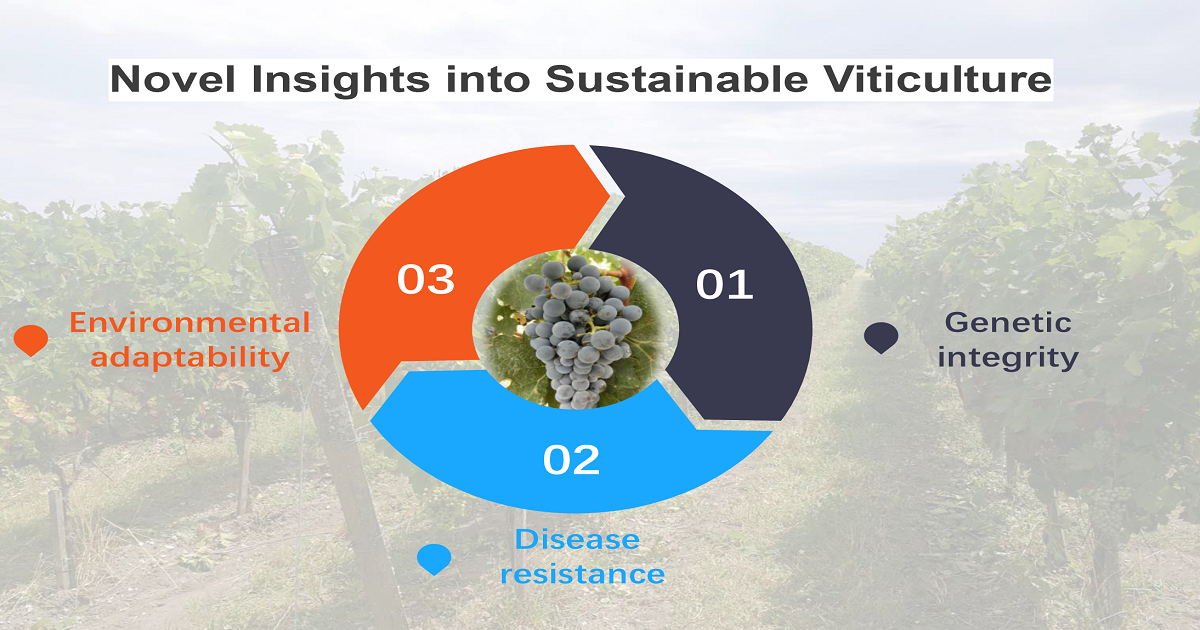Novel Insights into Sustainable Viticulture
A special issue of Horticulturae (ISSN 2311-7524). This special issue belongs to the section "Viticulture".
Deadline for manuscript submissions: 20 February 2026 | Viewed by 10058

Special Issue Editors
Interests: grapes and wine
Special Issues, Collections and Topics in MDPI journals
Interests: grape; viticulture; fruit wine; flavor; omics
Special Issues, Collections and Topics in MDPI journals
Interests: grapes aroma; transcriptional regulation for monoterpene
Special Issues, Collections and Topics in MDPI journals
Special Issue Information
Dear Colleagues,
As the global demand for high-quality, sustainably produced wine grows, innovative approaches in viticulture are paramount. This Special Issue, titled "Novel Insights into Sustainable Viticulture", invites researchers and practitioners to contribute their latest findings and methodologies in the propagation and cultivation of grapevines.
This Special Issue aims to highlight advancements in grapevine propagation that enhance sustainability, focusing on both traditional and cutting-edge techniques that ensure genetic integrity, disease resistance, and environmental adaptability. We encourage submissions that explore a range of topics, including but not limited to clonal selection, hybridization, the use of rootstocks, biotechnological innovations, and organic practices.
Moreover, contributions may cover improvements in water and nutrient management, pest and disease control strategies that minimize chemical inputs, and the integration of biodiversity to bolster ecosystem resilience. Furthermore, we are interested in research that applies precision agriculture technologies to optimize vineyard management and ensure the sustainability of viticulture practices.
This Special Issue will serve as a comprehensive resource for horticulturists, agronomists, researchers, and industry stakeholders who are at the forefront of transforming grape cultivation to meet modern challenges while maintaining the highest quality of grape production. Through collaborative research, we aim to foster viticultural practices that are productive, sustainable, and adaptable to changing climatic conditions.
Submissions of original research articles, review papers, and case studies are welcome. We look forward to your contributions.
Prof. Dr. Xiangyu Sun
Dr. Yu Wang
Dr. Xiangyi Li
Guest Editors
Manuscript Submission Information
Manuscripts should be submitted online at www.mdpi.com by registering and logging in to this website. Once you are registered, click here to go to the submission form. Manuscripts can be submitted until the deadline. All submissions that pass pre-check are peer-reviewed. Accepted papers will be published continuously in the journal (as soon as accepted) and will be listed together on the special issue website. Research articles, review articles as well as short communications are invited. For planned papers, a title and short abstract (about 100 words) can be sent to the Editorial Office for announcement on this website.
Submitted manuscripts should not have been published previously, nor be under consideration for publication elsewhere (except conference proceedings papers). All manuscripts are thoroughly refereed through a single-blind peer-review process. A guide for authors and other relevant information for submission of manuscripts is available on the Instructions for Authors page. Horticulturae is an international peer-reviewed open access monthly journal published by MDPI.
Please visit the Instructions for Authors page before submitting a manuscript. The Article Processing Charge (APC) for publication in this open access journal is 2200 CHF (Swiss Francs). Submitted papers should be well formatted and use good English. Authors may use MDPI's English editing service prior to publication or during author revisions.
Keywords
- grape quality
- aroma
- colour
- cultivation
Benefits of Publishing in a Special Issue
- Ease of navigation: Grouping papers by topic helps scholars navigate broad scope journals more efficiently.
- Greater discoverability: Special Issues support the reach and impact of scientific research. Articles in Special Issues are more discoverable and cited more frequently.
- Expansion of research network: Special Issues facilitate connections among authors, fostering scientific collaborations.
- External promotion: Articles in Special Issues are often promoted through the journal's social media, increasing their visibility.
- Reprint: MDPI Books provides the opportunity to republish successful Special Issues in book format, both online and in print.
Further information on MDPI's Special Issue policies can be found here.







